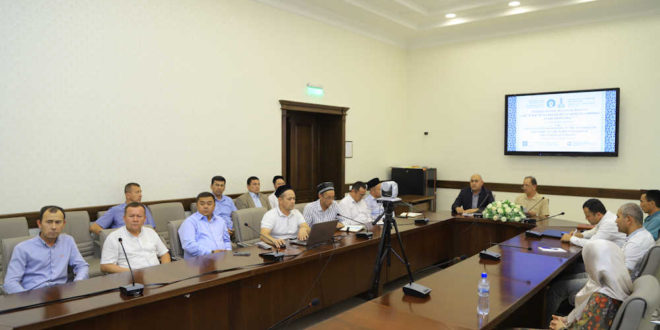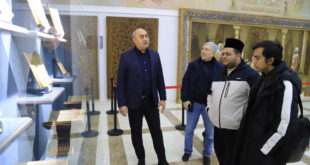On August 29, 2024, an online seminar was held at the Imam Bukhari International Scientific Research Center in collaboration with the Research Center for Islamic History, Art, and Culture (IRCICA) as part of the scientific project “Central Asia – A Hub of Islamic Culture and Art.” The seminar featured participation from the Center’s scientific staff, IRCICA representatives, as well as researchers from Turkey and Germany.
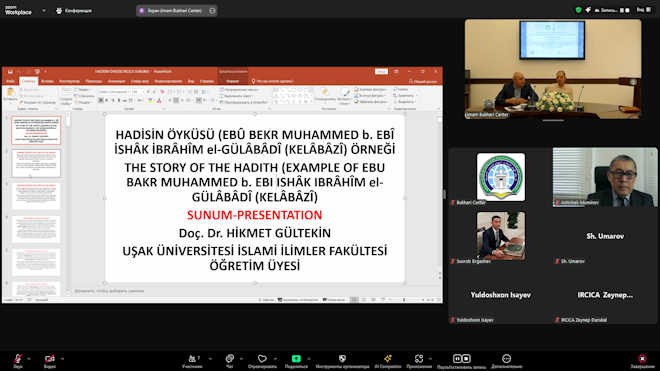
During the seminar, Hikmet Gultegin, an international scholarship recipient from the Imam Bukhari Foundation and an associate professor at Usak University in Turkey, delivered a lecture on “A Detailed Commentary on Hadith (Using the Works of Abu Bakr Muhammad ibn Ishaq Gulobadi as an Example).”
The scholar began by outlining the original purpose of all books written on hadith science. This involves accurately determining whether a hadith is authentic, unauthentic, or classified under another category, and correctly understanding the specific intentions of Prophet Muhammad (peace be upon him) in each narration. Scholars have produced timeless works and developed various methodologies to achieve these two goals.
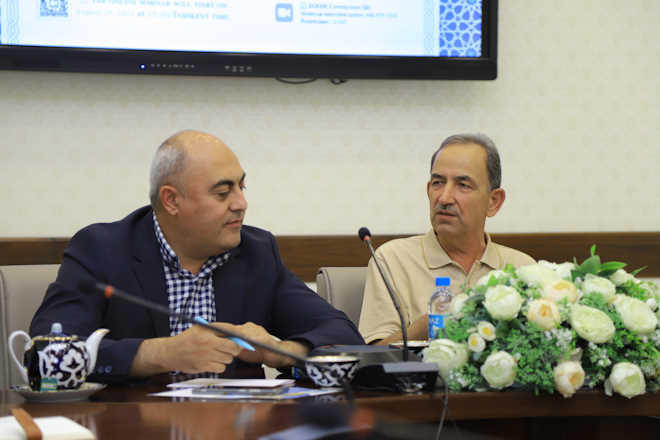
Gultegin emphasized his approach, which he termed “Hadith Narration,” based on Gulobadi’s method. According to him, understanding hadith correctly requires a good knowledge of the Prophet’s life and the Qur’an, and an in-depth analysis of their interconnections.
Considering that some practices once deemed acceptable by society might not fit today’s lifestyle, it is essential to compare hadiths, narrations, or reports with the conditions of both past and present. Otherwise, there may be a tendency to misunderstand certain hadiths. This issue extends to practices permitted by the Qur’an, such as polygamy, slavery, and women’s testimony. Attempting to justify the use of these practices can lead to various misunderstandings, disagreements, and conflicts.
Gultegin pointed out that while societal changes that used to occur over a century can now happen within ten to twenty years, there is a need to interpret hadiths in light of modern equivalents (criteria) and align them with contemporary social life. He also elaborated on Gulobadi’s views and the essence of other scholars’ works. For instance, Gulobadi’s work “At-Taarruf” was written as a refutation against innovations and corrupt Salafism prevalent among Sufis. He sharply criticized false ascetics and emphasized that the concept of Sufism should be characterized by obedience to Allah, beautiful morals, virtuous deeds, self-discipline, honesty, patience, sincerity, contentment, and love. His teachings guide individuals to interpret issues and problems causing disagreement among people through narrations, encouraging a positive outlook on life. The essence of the “Hadith Narration” is thus reflected in this approach.
Hikmet Gultegin also addressed several other factors that hinder the correct understanding and interpretation of hadith, providing practical examples related to these issues.
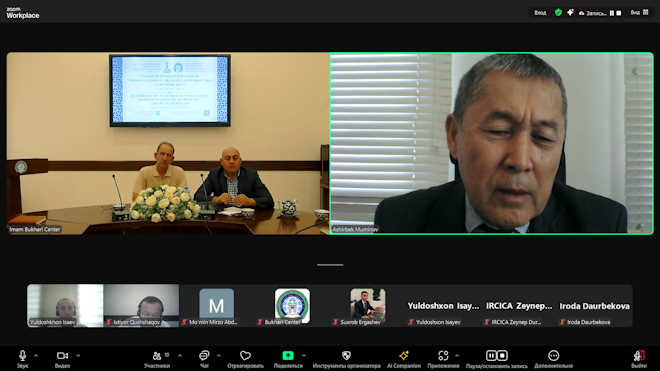
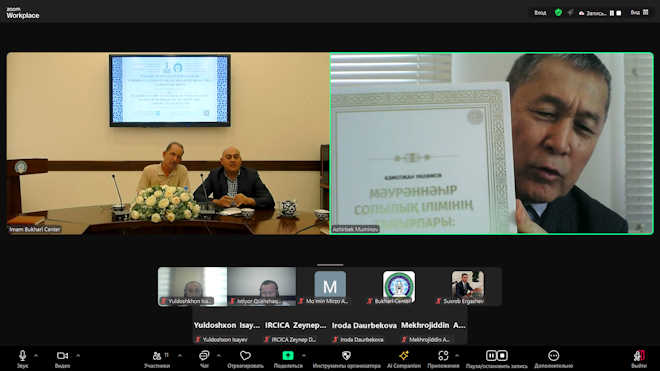
The seminar continued with intense questions and answers.
 Imom Buxoriy xalqaro ilmiy-tadqiqot markazi bukhari.uz
Imom Buxoriy xalqaro ilmiy-tadqiqot markazi bukhari.uz
